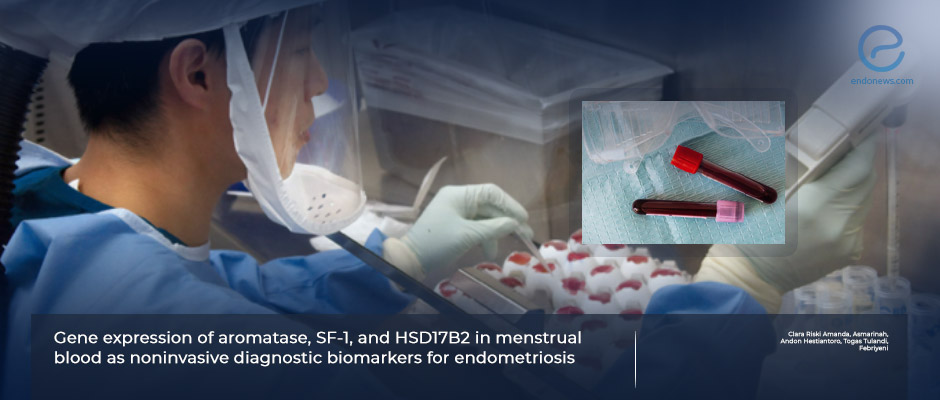Menstrual Blood Biomarkers for Noninvasive Diagnosis of Endometriosis
Nov 12, 2024
Some biomarkers could help diagnose endometriosis in a non-invasive manner.
Key Points
Highlights:
- Endometriosis diagnostic delays remain a major issue due to the lack of reliable, noninvasive tests.
- Menstrual blood is an underexplored diagnostic resource that could provide an accessible method for detecting common gynecological conditions like endometriosis.
Importance:
- Aromatase, SF-1, and HSD17B2 expression levels could be used as markers for the diagnosis of endometriosis in a non-invasive manner, preventing misdiagnosis.
What’s done here:
- A total of 40 participants (20 with endometriosis, 20 without) were included in the study.
- Menstrual blood and eutopic endometrial tissue were collected for analysis.
- Quantitative real-time PCR (qPCR) was used to measure the expression of aromatase, SF-1, and HSD17B2.
- The ROC curve statistical analysis was applied to evaluate the diagnostic performance of these biomarkers.
Key Results:
- The expression levels of aromatase, SF-1, and HSD17B2 were significantly higher in the menstrual blood of women with endometriosis
- In eutopic endometrial tissue, only HSD17B2 showed significant differences between the groups, while aromatase and SF-1 did not.
- Diagnostic performance Area Under Curve (AUC):
- Aromatase: AUC = 0.977 (Sensitivity = 95%, Specificity = 90%)
- SF-1: AUC = 0.862 (Sensitivity = 90%, Specificity = 80%)
- HSD17B2: AUC = 0.807 (Sensitivity = 80%, Specificity = 75%)
Limitations:
- This is a small study in just 40 participants and the results should be confirmed in larger cohorts.
Lay Summary
Aromatase, steroidogenic factor-1 (SF-1), and 17β-Hydroxysteroid dehydrogenase 2 (HSD17B2) levels in the menstrual blood can differentiate between patients with endometriosis and those without, according to a new study published in the European Journal of Obstetrics & Gynecology and Reproductive Biology.
While this finding suggests that aromatase, SF-1, and HSD17B2 could be biomarkers for the non-invasive diagnosis of the disease, more research is needed to validate their reliability. Reliable non-invasive biomarkers are still lacking in endometriosis. As a result many women still go undiagnosed or misdiagnosed.
Here, a team of researchers led by Dr. Febriyeni from the Department of Midwifery at the Faculty of Health, Universitas Fort De Kock in Bukittinggi, Indonesia measured the expression levels of aromatase, SF-1, and HSD17B2 in the menstrual blood of 20 patients with endometriosis and 20 women without the disease.
Patients with endometriosis had their disease confirmed by pathological diagnosis and pelvic ultrasound examination. Women without endometriosis had primary or secondary infertility and had no visible endometriosis lesion in endometrial examinations.
The results showed that the expression of aromatase, SF-1, and HSD17B2 was significantly higher in the menstrual blood of women with endometriosis compared to those without. In contrast, only HSD17B2 showed a significant difference in the eutopic endometrial tissue between the two groups, while aromatase and SF-1 did not.
These findings suggest that these biomarkers could play a crucial role in diagnosing endometriosis. However, the researchers note that further studies with larger sample sizes are needed to confirm the reliability of these biomarkers for routine clinical use.
“Our study showed that aromatase, SF-1, and HSD17B2 in the menstrual blood solidly discriminate between endometriosis and non-endometriosis patients with high diagnostic accuracy,” the researchers concluded.
Research Source: https://pubmed.ncbi.nlm.nih.gov/39116481/
biomarker endometriosis diagnosis

